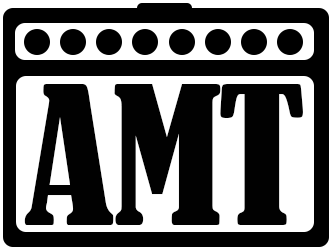Yesterday I told you the story of how I created the “Skeleton Key”. Today, I want to shift gears and talk about Matt. Matt was a guy who had been playing guitar for about four years and was just, sort of, stuck. Matt knew a lot about guitar: scales, songs, licks but he didn't feel confident in his ability to play well, to sound good. He even referred to himself as the Clunk Master! The thing is, he had been invited to jam with some guys who were forming a band and he really wanted to join the band.
He felt okay playing chords but when it came to being in the spotlight or taking a solo he… well, I’ll let Matt tell you in his own words:
“As much as I'd love to play in a band, the possibility that I might blow it in front of those guys filled me with dread.
I just didn’t know if my fingers were going to get right down on the strings to get the notes to ring. I know the chords but my fingers don't always make it in time. I could play a riff but getting all the notes in there four times in a row was like rolling dice."
Matt was encountering that paralyzing problem every guitarist faces when they’re ready to get serious – “Why do I keep making the same mistakes?” If you want rock-solid tone and chops, you HAVE to have an approach that allows your fingers to be at their best angle with the least struggle.
But that’s easier said than done, even with today’s access to free lessons online.
“I found some technique exercises on YouTube to practice and that helped… for a while. But then it was the same thing. I could do it slowly but when I sped up it just came apart or got really sloppy.
So I took a few lessons with a teacher and he showed me great exercises but when I asked how I could play as smoothly as he does he just said 'practice more'.”
That’s when a friend of mine pointed me in the direction of Bryan’s “Play Guitar By Feel”.”
Even though he assured me that it was simple, I knew that fixing all my years of bad habits was going to take some serious work and re-learning how to play was not an option. It was hard enough to get where I am now! Also, I couldn’t go backwards. I wanted to play well enough to join a band!”
My friend persuaded me that I had nothing to lose, so I downloaded my copy of “Play Guitar By Feel”. I was already convinced it wouldn’t work, but as I made my way through, I was amazed at how simple it was to follow. Everything was broken down into easy-to-understand steps – even for me!”
I didn’t quite get the idea the first time. I went back to it a couple of times and then it started to sink in, especially the way it felt. At first it felt awkward but after a while I realized that my hand felt less strained and I could reach all the notes.“
Over the next few days I warmed up with it and then played the songs I was working on. When I hit a snag, I would adapt the position from the exercise into the song and it worked! I started hitting those notes accurately and the sound just came out more!“
I only had a week to get ready for the jam with the guys but I used the exercise to clean up the critical points in my playing and I got the gig! Now I’m in and I’ve got plenty of time to work the exercise through the entire set.”
Bryan’s exercise gave me confidence in my playing when I was starting to think that I just didn’t have “it”. Now I’ve got more than “it”, I’ve got my sound!”
I wanted to share Matt’s story because it’s one thing for a guitar teacher like me to say something is simple, but it’s another when a self-confessed “clunk master” says it.
So, how’s your guitar treating you? If it's being a little "difficult" be sure to download and dive into your copy of “Play Guitar By Feel”.
Like Matt, you might find that getting a technique and sound you’re proud of is a lot easier than you imagined…
Bryan
PS. When we come across an exercise, scale or any guitar tip we know is the right thing to practice we often want to dive right into it, right?
Well, our enthusiasm and commitment can get burned up in a hurry if we don't understand something crucial about the nature of practice.
And in my next email, I'll tell you what that is…
